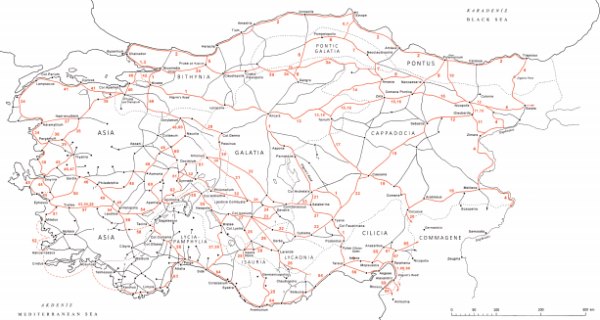First Roman roads started to be built with the beginning of the Roman Republic. Roads were built and maintained during the Roman Empire era too. 372 roads were connecting 113 provinces of the Roman civilization. There were estimated 400,000 kilometers of roads ever built by Romans and about quarter of these roads were paved.
Roman roads in Asia Minor had standard 2.37 (8 feet) meters width. Later width was updated into 3.7 (12 feet) meters. Ideal Roman road was straight and needed as little maintenance as possible.

A horse powered cart could travel in between 40 and 50 kilometers in a day. A pedestrian could walk in between 20 and 25 kilometers a day. Ox pulled carts were especially used to transport cargo city to city. It was allowed to ride on the Roman roads as long as you are a married woman, businessman or government official. Carts were not allowed within less than a kilometer of city walls and in the city centers since charts damaged the pavement stones.
Roads in Asia Minor were originally built by the Roman government but once they were built it was province’s duty to maintain them. Also, citizens who had interest in the road and people with money to donate could pay for the maintenance too. A state official called censor was in charge of the roads in his area.
The first Roman roads in Asia Minor were targeting Ephesus since the city was the capital of the Asia Minor. The first governor pointed by the Roman Empire was Manius Aquillius (129–126 BCE) and he immediately started building roads in Anatolia.
Famous Roman Roads in Asia Minor
Roman roads were the arteries of the empire. They linked communities, cities, and villages. If it were not for them, the Romans would have not conquered vast lands for centuries, and they could not hold them. Moreover, these roads today form the basis of hundreds of roads across Turkey, so the Romans’ amazing engineering and land surveying skills cannot be ignored.